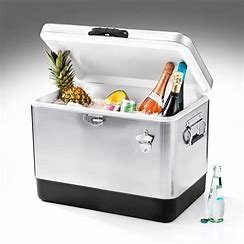Kataifi, too known as kadayif or kunafa, is a Middle Eastern dessert that is characterised by its lean, destroyed baked goods. It is ordinarily made with filo mixture that is destroyed into lean strips, doused in a sweet syrup, and at that point heated or browned. The cake is frequently layered with cheese, nuts, or other fillings, making a wealthy and liberal treat.
A Brief History of Kataifi
The correct roots of kataifi are vague, but it is accepted to have begun in the Middle East, conceivably in Persia or the Hassock Realm. The dessert has been popular for centuries and has spread to different locales around the world, counting the Balkans, North Africa, and South Asia.
The Fixings and Preparation
Kataifi is made with a few basic fixings, including:
Shredded filo dough
Sweet syrup (usually made with sugar, water, and lemon juice)
Cheese (often ricotta, cream cheese, or goat cheese)
Nuts (such as pistachios, almonds, or walnuts)
Butter or oil
The arrangement of kataifi includes a few steps:
Soaking the batter: The destroyed filo batter is drenched in a sweet syrup until it gets to be delicate and pliable.
Layering the cake: The splashed mixture is at that point layered in a preparing dish, frequently with cheese or nuts between the layers.
Baking or singing: The baked good is prepared or fricasseed until it is brilliant brown and crispy.
Topping and serving: After preparing or searing, the kataifi is ordinarily topped with a liberal sum of sweet syrup and regularly embellished with nuts or rosewater.
Variations and Territorial Differences
Kataifi has numerous varieties and territorial contrasts. In a few districts, it is made with a savoury filling, such as spinach or meat. In others, it is topped with a velvety custard or ice cream. The dessert is moreover frequently delighted amid uncommon events, such as Ramadan, Eid, and weddings.
Health Benefits:
Rich in supplements: Kataifi is a great source of carbohydrates, protein, and fibre.
Low in fat: The dessert is moderately moo in fat, making it a healthier alternative compared to other fricasseed treats.
High in cancer prevention agents: The nuts and flavours utilised in kataifi frequently contain cancer prevention agents, which can offer assistance to ensure against cell damage.
Cultural Significance:
Traditional dessert: Kataifi is a conventional dessert in numerous Central Eastern nations and is frequently related with extraordinary events and celebrations.
Symbol of neighbourliness: Serving kataifi to visitors is a sign of neighbourliness and liberality in numerous cultures.
Religious importance: Kataifi is in some cases expended amid devout celebrations, such as Ramadan and Eid.
Tips for Making Kataifi:
Patience is key: Making kataifi can be time-consuming, but the things that come about are worth it.
Use new fixings: The quality of the fixings will influence the taste and surface of the desert.
Be cautious when singing: Singing kataifi can be muddled, so work carefully to dodge accidents.
Experiment with diverse fillings: Kataifi can be filled with an assortment of fixings, so do not be anxious to experiment.
Enjoy Kataifi!
Kataifi is a delightful and flexible dessert that can be delighted in by individuals of all ages. With its wealthy history, social centrality, and dietary benefits, it is no ponder that this treat has ended up so prevalent around the world.
Additional Points:
Storage: Kataifi is best delighted in new, but it can be put away in an air proof holder in the fridge for up to 3 days.
Dietary Contemplations: For those with dietary confinements, veggie lover and gluten-free adaptations of kataifi can be made by utilising fitting substitutes.
Pairing with Other Dishes: Kataifi can be combined with an assortment of dishes, counting savoury primary courses and other desserts.
Regional Contrasts: The planning and fixings of kataifi can change somewhat depending on the region.
In Summary:
Kataifi is a delicious and versatile dessert that has been delighted for centuries. Its sensitive surface, wealthy flavour, and sweet smell make it a prevalent choice for those who appreciate Middle Eastern food. Whether you are a fan of conventional sweets or essentially looking to attempt something unused, kataifi is unquestionably worth a taste.
FAQS:
What is kataifi?
A: Kataifi, moreover known as kadayif or kunafa, is a Middle Eastern dessert characterised by its lean, destroyed baked goods. It is regularly made with filo mixture that is destroyed into lean strips, doused in a sweet syrup, and at that point prepared or browned. The cake is regularly layered with cheese, nuts, or other fillings, making a wealthy and liberal treat.
What are the primary fixings in kataifi?
A: The primary fixings in kataifi are:
Shredded filo dough
Sweet syrup (ordinarily made with sugar, water, and lemon juice)
Cheese (regularly ricotta, cream cheese, or goat cheese)
Nuts (such as pistachios, almonds, or walnuts)
Butter or oil
How is kataifi prepared?
A: The arrangement of kataifi includes a few steps:
Soaking the batter: The destroyed filo batter is splashed in a sweet syrup until it gets to be delicate and pliable.
Layering the baked good: The doused batter is at that point layered in a heating dish, regularly with cheese or nuts between the layers.
Baking or searing: The baked good is prepared or browned until it is brilliant brown and crispy.
Topping and serving: After preparing or searing, the kataifii is ordinarily topped with a liberal sum of sweet syrup and frequently decorated with nuts or rosewater.
What is the distinction between kataiifi and baklava?
A: While both kataifii and baklava are Center Eastern sweets made with filo mixture and sweet syrup, there are a few key differences:
Shape: Baklava is ordinarily cut into jewels or triangles, whereas kataifii is frequently destroyed into lean strips.
Filling: Baklava is as a rule filled with chopped nuts, whereas kataifii can be filled with cheese, nuts, or other ingredients.
Texture: Baklava is more firm and flaky, whereas kataifii has a milder and more chewy texture.
Can kataifii be made vegan or gluten-free?
A: Yes, it is possible to make vegan and gluten-free versions of kataifii. For a vegan version, use vegan cheese and a vegan sweet syrup. For a gluten-free version, use gluten-free filo dough or a gluten-free substitute.
To read more, click here





